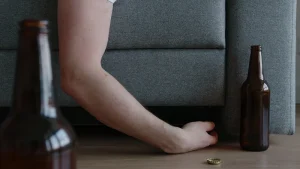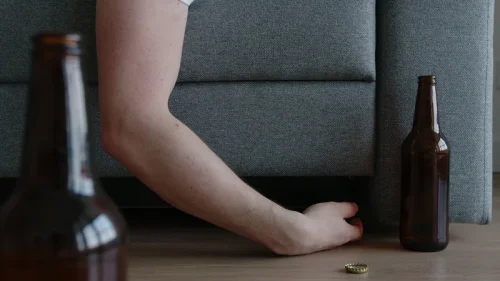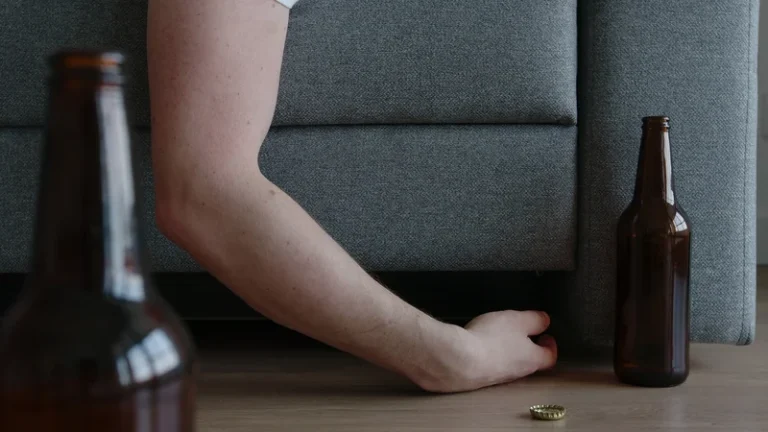
You may think you can reduce your alcohol intake on your own, but this can be challenging if you suffer from alcohol addiction. About five percent of people withdrawing from alcohol experience delirium tremens (DTs). If you’re addicted to alcohol and have been drinking heavily for years, you’re at risk for this complication. Generally, you may need treatment for alcohol misuse when you can no longer control the amount you drink or how long you drink.
Assessing Severity

When your body develops chemical dependence on alcohol, it adapts to a consistent chemical balance change over time. When you stop drinking abruptly, a significant chemical change happens all at once. This will throw your body into chemical imbalance, which leads to uncomfortable feelings of withdrawal. While other types of alcohol are poisonous to humans, it’s thought that we developed the ability to drink ethanol because it’s naturally produced in fallen fruit. The production and consumption of alcohol have also been practiced for thousands of years.
Social Support and Treatment Programs
- When the seizure begins during the aura stage, it may be called a partial seizure or a simple focal seizure.
- Over time, your central nervous system adjusts to having alcohol around all the time.
- If you are attempting to detox independently, be sure you have a responsible adult watching closely to ensure your safety.
- These symptoms occur as a person’s body adjusts to the absence of alcohol in their system.
- Some alcoholics drink to control the tremulousness that sometimes precedes seizures; therefore, the smell of alcohol on the breath does not rule out the diagnosis of alcohol withdrawal seizures.
However, try not to have too many firm expectations, as symptoms can continue for multiple weeks in some people. Barbiturates such as phenobarbital can be used to treat alcohol withdrawal but are far less commonly employed than benzodiazepines because of their narrow therapeutic index. Your healthcare provider will recommend and encourage treatment for alcohol use disorder. When you stop consuming alcohol after prolonged, heavy use, your CNS can’t respond or regulate itself fast enough. Some people experience prolonged withdrawal symptoms, like insomnia and mood changes, that can last for weeks or months. In addition to the sober individuals, many people among the remaining two-thirds are also drinking less and experiencing fewer alcohol-related health problems after one year.
Prevention of further drinking
BZDs elicited similar changes in alcohol withdrawal scores compared with other drugs. The findings of the review are complicated by the heterogeneity among trials. Severe and complicated alcohol withdrawal requires treatment in a hospital — sometimes in the ICU. While receiving treatment, healthcare providers will want to monitor you continuously to make sure you don’t develop life-threatening complications. You will typically require hospitalization if you experience seizures related to alcohol withdrawal. While in the hospital, a medical team can monitor any other symptoms you withdrawal seizures symptoms may experience, as well as treat your seizures.
benzodiazepines

Treating alcohol withdrawal is a short-term fix that doesn’t help the core problem. When you talk to your doctor about symptom relief, it’s a good idea to discuss treatment for alcohol abuse or dependence. Alcohol withdrawal syndrome is a condition that occurs when an individual stops consuming alcohol after a long-term dependence.
Supporting Long-Term Abstinence
The dose of medication required to control alcohol-withdrawal symptoms can vary greatly among different patients and over time in the same patient. However, because high doses may cause respiratory depression, vital signs must be carefully monitored with each loading dose to avoid benzodiazepine toxicity, especially in patients with liver disease. In the second approach repeated fixed doses at regular intervals are administered; this strategy can be particularly useful when it is difficult to assess and monitor progression of withdrawal signs. After the patient is stable for 2 to 3 days, the benzodiazepine can be slowly tapered over 7 to 10 days. In elderly patients or those with liver disease, repeated administration of shorter-acting benzodiazepines such as oxazepam or lorazepam may be safer. A third approach is symptom-guided by monitoring instruments such as the revised Clinical Institute Withdrawal Assessment for Alcohol (CIWA-Ar), which is a 10-item scale that can be administered at the bedside within 5 minutes.
From 24 to 72 Hours
To prevent alcohol withdrawal seizures, only drink alcohol in moderation or avoid drinking it altogether. After medical detox, most people benefit from an addiction treatment program that prepares them to resist relapse. Behavioral therapy, recreation, and support groups may be part of a personalized treatment plan that encourages a healthier lifestyle. Seizures can occur within 48 hours of your last drink, though they occasionally happen a few days later.


Tapering can help avoid serious withdrawal symptoms, including delirium tremens. However, alcohol, along with other depressants, is among the most dangerous substances during the withdrawal phase, especially if you quit cold turkey. https://ecosoberhouse.com/ The overstimulating effects of alcohol withdrawal can lead to increased blood pressure, heart palpitations, sleeplessness, fever, hallucinations, panic, and seizures.
Alcohol Withdrawal Timeline & Symptoms
Dependence is a chemical response to the consistent presence of alcohol in your brain and body. The “front‐loading” or “loading dose” strategy uses high doses of longer‐acting benzodiazepines to quickly achieve initial sedation with a self‐tapering effect over time due to their pharmacokinetic properties. This is especially important in elderly patients and those with hepatic dysfunction. The alcohol withdrawal timeline varies, but the worst of the symptoms typically wear off after 72 hours. People who are daily or heavy drinkers may need medical support to quit. Two commonly employed strategies are fixed multiple daily dosing and symptom-triggered treatment for individuals requiring medications to manage alcohol withdrawal.
At the same time, endogenous GABA is downregulated.3 Thus, when alcohol is withdrawn, a relative deficit of GABA may occur and simultaneous excess in glutamate, resulting in the excitatory symptoms seen in alcohol withdrawal syndrome. Post-acute withdrawal syndrome (PAWS)—also called protracted withdrawal—can make it challenging to resist relapse. Knowing that it’s possible and looking out for alcohol withdrawal symptoms can help you be aware that cravings can return long after detox. After the acute alcohol withdrawal period, some people experience symptoms that last up to a year.




























































